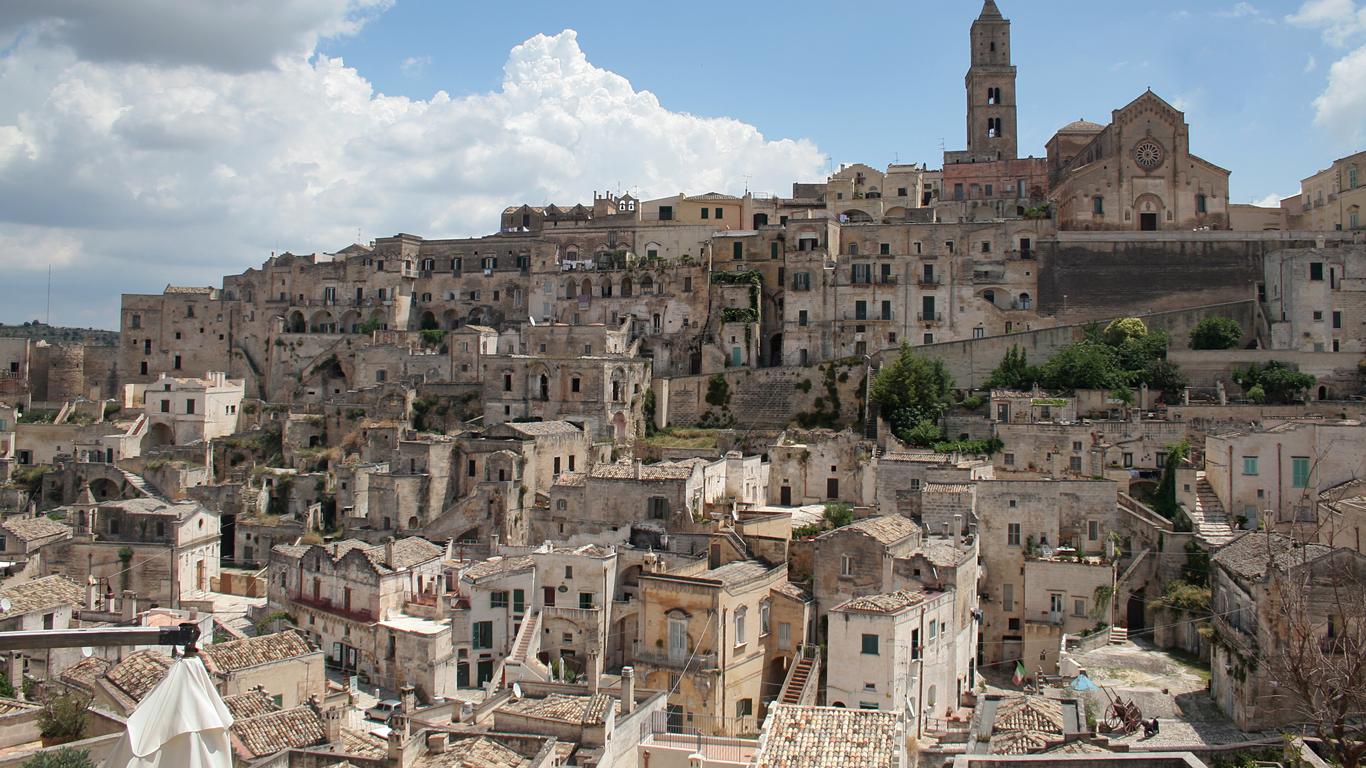The old town of Matera in the southern Italian region of Basilicata, perched on the sloping Gravina gorge, harbours an ancient enclave of Italian cave dwellings known as the Sassi di Matera, literally meaning the “stones of Matera”. The multi-layered stone abodes create a labyrinth of curving lanes and stairs used by film companies to depict Biblical scenes, now housing quaint cafes, hotels and gift shops geared toward tourists. In a striking display of living history, the caves of Sassi di Matera have been continually occupied for about 9000 years.
Visitors to Sassi di Matera can explore two sections, the original Sasso Caveoso and the later Sasso Barisano. A collection of beautiful rupestrian churches, monasteries and hermitages date to the Middle Ages and display colourful frescoes and drawings, while the newer Chiesa di San Pietro Caveoso stands alone as a 17th century example of Romanesque-Baroque architecture. The Museo Nazionale d'Arte Medievale e Modernadella Basilicata gives a first-hand view of paintings and murals by Carlo Levi, including his “Lucania ’61” mural portraying the everyday life of peasants in Italy.
To reach the Sassi, travellers can take a train from Bari to the Matera, about a 1.5-hour journey, and Centrale station, and then walk about 15 minutes to reach the caves. Many private tours or shuttle companies depart from cities throughout the region as well. Regardless of the mode of transportation to the entrance, walking is the only way to explore the caves themselves, with numerous stairs and sloping lanes.
Listed as a UNESCO World Heritage site, the Sassi di Matera evolved from a prehistoric cave-dwelling settlement, typically referred to as a troglodyte community, extending from the Paleolithic to the Neolithic era.Many historians believe these were the first human settlements in Italy, now numbering more than 1000 dwellings and churches. The ravine that holds the grottoes is referred to as “la Gravina”, and was created by the once-raging river.





